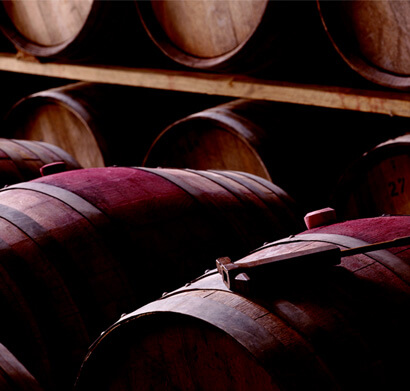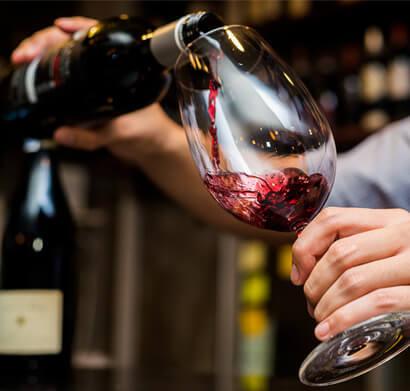Découvrez nos autres vins disponibles dans la catégorie Branaire Ducru


The 2016 Branaire-Ducru is a blend of 64% Cabernet Sauvignon, 27% Merlot, 6% Petit Verdot and 3% Cabernet Franc picked from 28 September until 19 October at 50 hectoliters per hectare, one of the longest harvest periods at the estate. The nose is quite intense with black fruit infused with pencil shaving and a touch of tobacco, unashamedly classic in style, a little distant compared to some other Saint Juliens but undeniably well defined and full of character. The palate is structured and masculine, exerting a firm grip in the mouth, spicier than its peers with cracked black pepper complementing the black fruit, tobacco and smoke towards the structured finish. There is great length here, very persistent in the mouth, a little "rougher" in texture than others, but that will be smoothed out during élevage and in bottle. Give this Branaire-Ducru five or six years in bottle because it has great potential, one of the best produced at the estate in recent years. (NB This sample was taken from a new barrel, though the final blend will be 60%.)
The core of this red is loaded with pure plum, blueberry and black currant fruit flavors. The polished structure is integrated, with alluring ganache, anise and sweet tobacco notes throughout, all in a polished and balanced frame. A very classy red that isn't shy about its power but pushes its purity to the fore. Best from 2024 through 2039. 15,000 cases made. — JM
The best vintage of this wine since 2009! Effusive, fresh redcurrant and cassis aromas give this St.-Julien terrific drive and energy, the elegant, dry tannins beautifully married to the medium body, right through the long, agile finish. Drink or hold.
Il est une des révélations de cette dégustation et le meilleur vin fait dans cette propriété. Son point fort est la stagnation du vin en milieu de bouche pendant quelques instants. Il ressort de l'ensemble un naturel incroyable. Profond, savoureux, vivant, le vin s'achève très savoureux et long sur un grain fin.
64% Cabernet Sauvignon, 27% Merlot, 6% Petit Verdot, 3% Cabernet Franc. Spring was wet and cool, which allowed for healthy leaf development, but a watchful eye was needed for mildew. A long spell of dry and sunny weather at the beginning of June encouraged homogeneous flowering across the vast majority of the estate's plots. From 23 June to 13 September summer was extremely dry and sunny with only 5.5 mm of rainfall in July and 14.5 mm in August. Progressive lack of water in the vineyard was favourable to the development of the grapes' phenolic content – which contributes to both colour and tannins. Periodic rainfall from 13 to 16 September (38 mm at Branaire-Ducru) was very helpful in assuring complete maturity, especially for the grapes on the younger vines. Harvest 28 September to 19 October.
Bright vibrant youthful crimson. Very intense and focused. Polished tannins and very suave. Lovely concentration of ripe fruit disguises the very considerable tannic charge. Just a very slight inkiness on the end which will presumably disappear with bottle age.
Commentaires du Château
Branaire Ducru est l'un des grands classiques de Saint-Julien. C'est une propriété plus sobre, esthétiquement, que son voisin le château Beychevelle, mais qui est à l'origine, elle aussi, d'un excellent vin. Ce Quatrième Grand Cru Classé ferme et corsé développe une palette aromatique très intéressante où la dominance de cabernet est caractérisée par des notes de cassis très marquées. La prune, le bois de cèdre et certaines années le chocolat, viennent compléter ce subtil florilège de parfums que nous offre ce grand vin de garde.
Histoire du Château
Le Château Branaire ducru est fondé au 17e siècle. Lorsque le château Beychevellle est mis en vente par les héritiers du Duc d'Epérnon, il est divisé en trois propriétés distinctes : l'actuel château Beychevelle, le château Ducru Beaucaillou et le château Branaire ducru. Jean-Bapstiste Braneyre se porte acquéreur du domaine auquel il donnera son nom en 1680. Ses descendants, les Duluc, font fructifier le domaine et lors du classement de 1855, le château Branaire Ducru accède au rang de Quatrième Grand Cru Classé. En 1860, Les Duluc cèdent le domaine à Gustave Ducru qui ajoutera son nom à celui du château. À sa mort, le domaine change plusieurs fois de propriétaire pour finalement se trouver entre les mains du groupe familial présidé par Patrick Maroteaux en 1988. Cet amoureux du vin, aussi président du groupe français Sucre Union, a trouvé le terroir qu'il cherchait pour élaborer un grand vin. Cet entrepreneur a considérablement modernisé ses équipements et sous son impulsion, le château retrouve le rang qu'il mérite. Très vite adopté par le Médoc, l'homme d'affaires est élu à la tête de l'Union des grands crus, puis président du syndicat de Saint-Julien. Pour atteindre ses objectifs, Patrick Maroteaux s'est entouré d'une équipe passionnée et performante, dirigée par Jean-Dominique Videau.
Aujourd'hui...
François-Xavier, le fils de Patrick Maroteaux, l'a désormais rejoint au château, il désire créer un style moderne et séduisant, que ce soit pour le grand vin ou pour le second vin, Duluc de Branaire : « On a donné une vraie identité aux vins depuis 27 ans avec un caractère bien typé autour d'un style et d'une qualité. Notre objectif est d'aller le plus loin possible dans l'expression du terroir selon la méthode des 3 F : Fruit, Fraicheur, Finesse ». Poussés par cette ambition, père et fils continuent d'insuffler cette humanité de la vigne unique en Médoc.